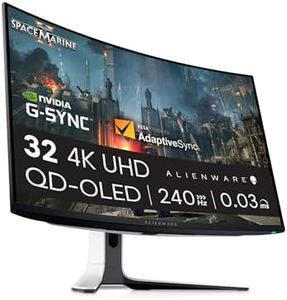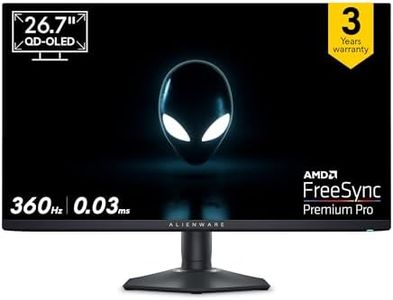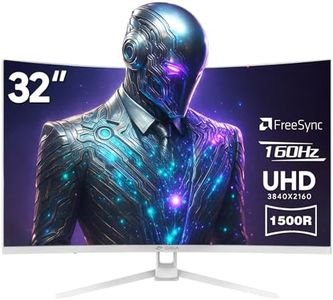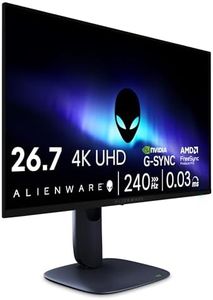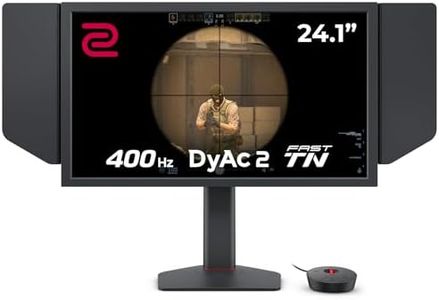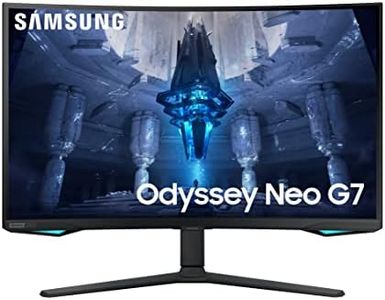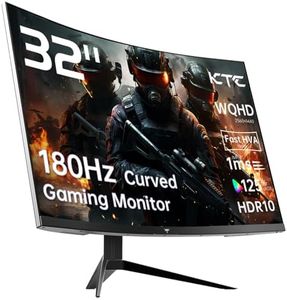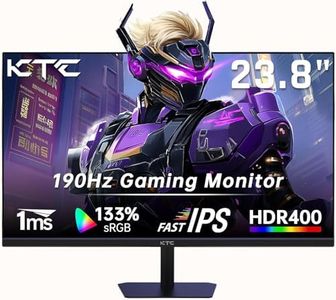We Use CookiesWe use cookies to enhance the security, performance,
functionality and for analytical and promotional activities. By continuing to browse this site you
are agreeing to our privacy policy
10 Best Gaming Monitors
From leading brands and best sellers available on the web.By clicking on a link to a third party's website, log data is shared with that third party.
Buying Guide for the Best Gaming Monitors
Choosing a gaming monitor can really transform your play experience, but there are lots of specs to consider. It's important to match the monitor to the type of games you play and your own play style. Fast-paced shooters and competitive games might demand different features from story-driven or casual games. Take time to think about what's most important to you—be it smoothness, picture quality, or special features. Understanding key specifications and how they relate to your preferences will help you pick the gaming monitor that truly fits your needs.Refresh RateThe refresh rate, measured in hertz (Hz), tells you how many times per second the screen updates its image. For gaming, a higher refresh rate means smoother motion and less blur, which is especially useful in fast-paced games. Standard monitors usually have 60Hz, while 120Hz, 144Hz, and 240Hz are common for gaming monitors. For casual or story-driven games, 60-75Hz might be enough, but if you play a lot of competitive shooters or eSports titles, a higher refresh rate like 144Hz or 240Hz will make gameplay feel more responsive and smooth.
Response TimeResponse time measures how quickly each pixel can change from one color to another, usually given in milliseconds (ms). Lower response times mean less motion blur and ghosting, which helps in fast-moving scenes. Gaming monitors often advertise response times as low as 1ms, while average screens might be 4-5ms. If you play fast games and care about crisp visuals without trails following moving objects, look for a low response time. However, for slower games or general use, slightly higher response times may not be noticeable.
Panel TypeThe panel type determines the monitor's color reproduction, viewing angles, and speed. The three main types are IPS, TN, and VA. IPS panels are known for vivid colors and wide viewing angles but may have slower response times. TN panels offer very fast response times and high refresh rates, but colors and viewing angles are more limited. VA panels sit in the middle, often offering good contrast and deeper blacks. If you care most about color and image quality for immersive games, IPS is a good choice. If you play mainly fast competitive games, TN might suit you better; VA is a great all-rounder for those who want both decent speed and contrast.
ResolutionResolution refers to how many pixels the display has, affecting how sharp and detailed the image looks. Common resolutions are Full HD (1920x1080), QHD (2560x1440), and 4K (3840x2160). Higher resolutions mean better image clarity, but they also demand more from your computer. For most gamers, 1080p is plenty and ensures high frame rates, while 1440p offers a nice jump in detail if your graphics card can handle it. 4K delivers stunning visuals but requires a very powerful system to keep up, especially at higher refresh rates. Choose a resolution that matches your gaming PC’s power and your own desire for sharp visuals.
Adaptive SyncAdaptive sync technology, such as FreeSync or G-Sync, helps match your monitor’s refresh rate to your graphics card’s output, greatly reducing problems like screen tearing or stuttering during fast gaming. This specification comes in handy when your frame rates are not always stable. If you notice tearing or jitter in games, adaptive sync can help to create smoother gameplay. Choose a monitor with adaptive sync if you want the cleanest possible visuals, especially if you often see frame drops when playing demanding games.
Input and ConnectivityThis spec refers to the different ports available on your monitor, such as HDMI, DisplayPort, and USB. The type of ports can affect which devices you can easily plug in and sometimes which features you can access (e.g., certain refresh rates or resolutions may require DisplayPort). Make sure the monitor has the right connections for your gaming PC, console, or other devices. If you’re using newer and faster refresh rates, ensure your cables and ports support those standards.
Screen Size and CurvatureScreen size is the diagonal measurement of the display, usually given in inches. Bigger screens can offer a more immersive experience, but they also take up more space on your desk. Curved monitors are also popular for gaming because they can pull you into the action more, especially on ultrawide or larger displays. Choose a screen size that fits both your desk and how far you like to sit from the monitor. Curved screens are great if you want a more enveloping view, but flat screens are usually just fine for most gamers.
